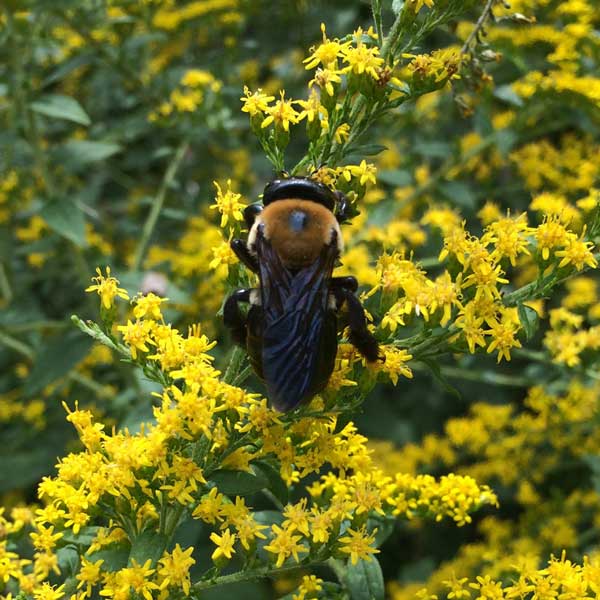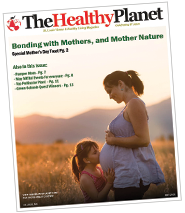
By Linda Wiggen Kraft
As if gardeners needed an excuse to plant more flowers, there is an urgent need to do so now. If you plant flowers, bees will come. Bees need flowers and we need more bees, native bees especially. Research done by St. Louis University’s Center for Sustainability found that urban areas have more native bee populations than rural areas. Twenty-eight flowering garden sites within St. Louis were studied to see what the diversity of native bees was. Of the 452 species of native bees found in Missouri, 202 of them were found at these city sites. The sites in rural areas had far fewer native bee species than the city sites. We city and suburban gardeners don’t often realize our gardens need to be part of the ark that sustains these bees.
And we often don’t realize how important native bees are. There are over 4,000 species of native bees in the United States. They actually do most of the pollinating, and often more effectively than honeybees because they quickly move more pollen around. Native bees pollinate many plants that can’t be pollinated by honeybees. Love those summer tomatoes and blueberries? Only native bees can pollinate them. There are species of native bees that pollinate only certain plants like the squash bee. It co-evolved with native squash, gourds and pumpkins and is the best pollinator for these plants, meaning the presence of this bee can be the difference between crop abundance or failure.
How can we urban and suburban gardeners help sustain these important bees? The number one need is to plant more flowers in our own gardens and public spaces. Exactly what kind of flowers? Plants with flowers that bloom early in the season and late are needed along with summer blooms. With earlier and later warmth in our changing climate, early bloomers like witch hazel (hamamelis) and late bloomers like asters and golden rod (solidago) provide food when bees are out. Native plants co-evolved with native bees, they should be the first choice.
Provide space for homes of these bees. Let parts of the garden overwinter without cleaning up until weather warms. Some native bees lay eggs and live in the plant stems until spring. Seventy percent of native bees live underground. Provide some bare dirt areas for these burrowing insects. Don’t use pesticides and don’t buy plants that have been grown with neonicotinoids. Neonics, as they are called, are neurotoxic chemicals that are embedded in each cell of the plant. They are often used as seed coatings and used when plants are grown. They kill or slowly destroy bees and other pollinators who eat the plant or collect nectar and pollen from them. Check when buying plants to make sure the plants weren’t grown with these chemicals.
Three books give specific information about native plants and native bees. Xerxes Society has published two of the best, 100 Plants to Feed the Bees and Attracting Native Pollinators. For photos of native bees and plants, flowering time charts and best habitat read Pollinators of Native Plants by Heather Holm.
As the growing season fast approaches find ways to plant more flowers. The bees will come. Let your garden be part of the ark.
Linda Wiggen Kraft is a landscape designer who creates holistic and organic gardens. She is also a mandala artist and workshop leader. Visit her blog: www.CreativityForTheSoul.com/blog or her website: www.CreativityForTheSoul.com. Call her at (314) 504-4266.
Visit my booth at the Healthy Planet Expo, March 25 in Webster Groves.


